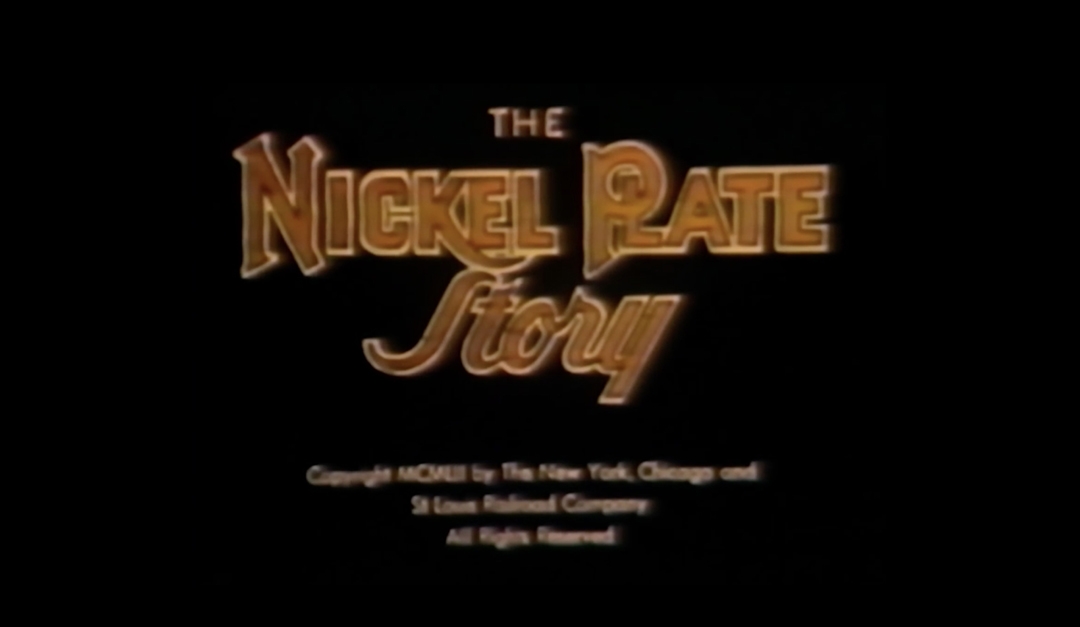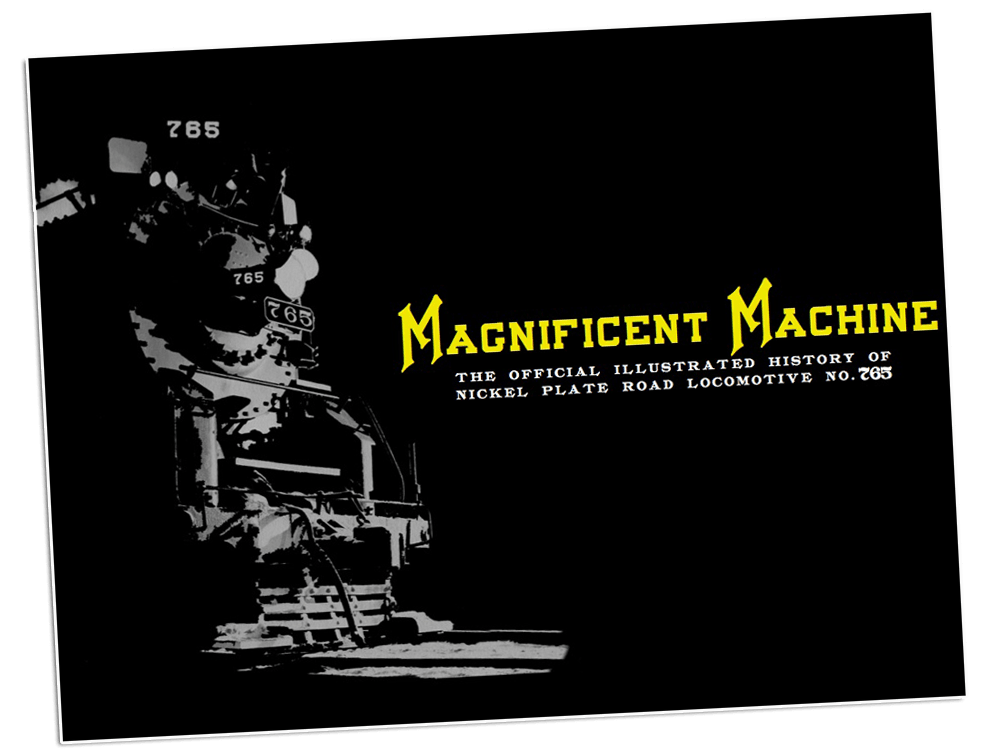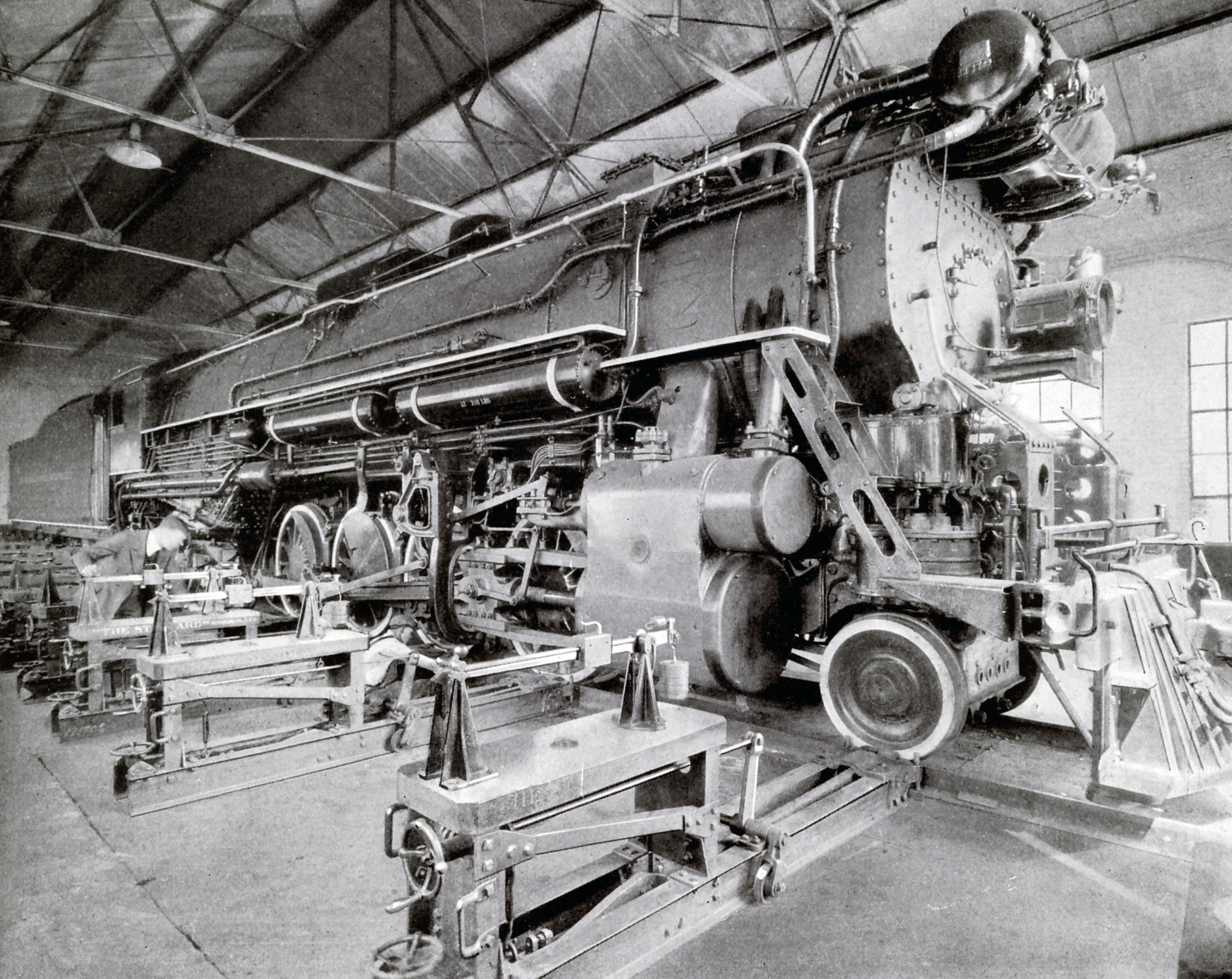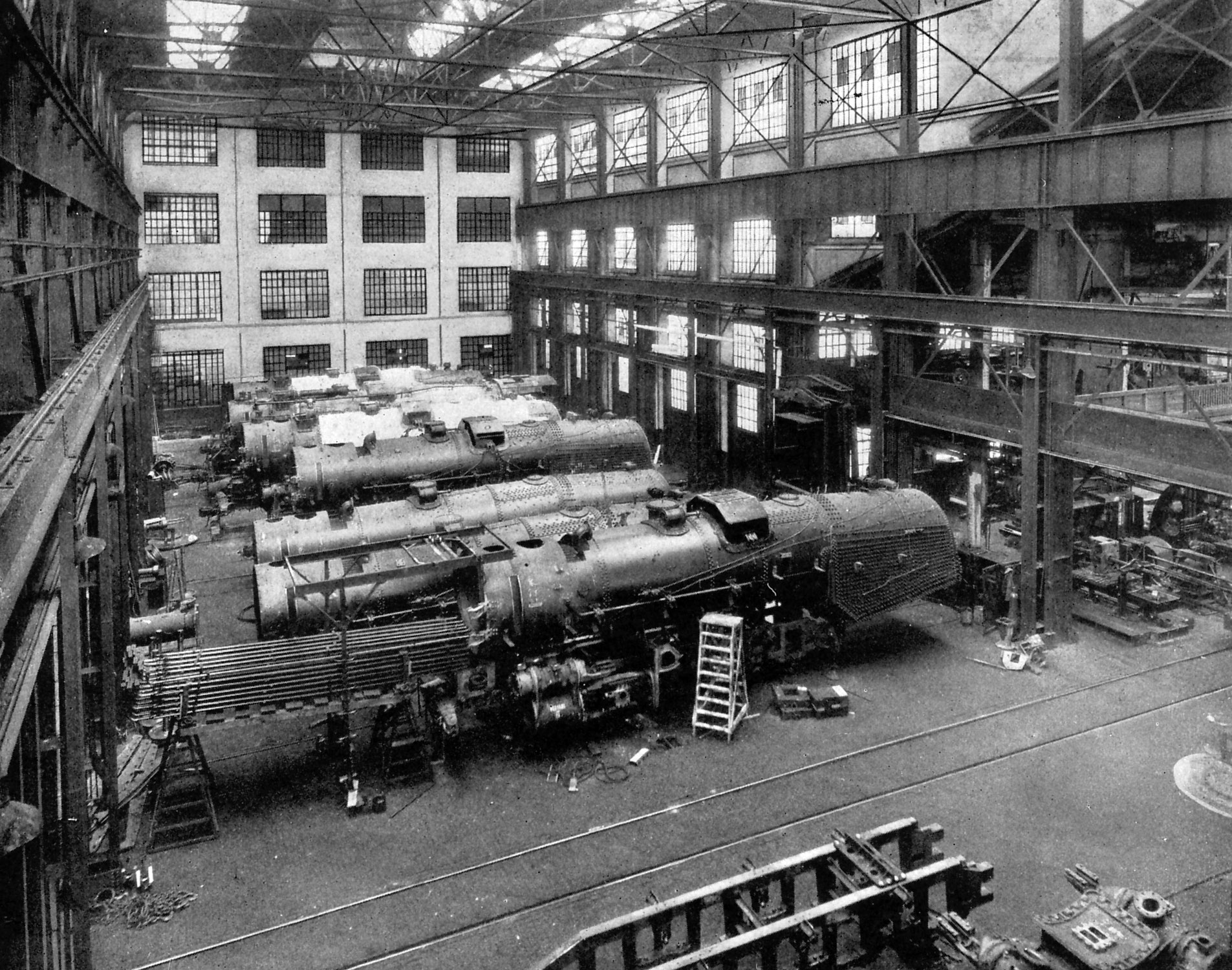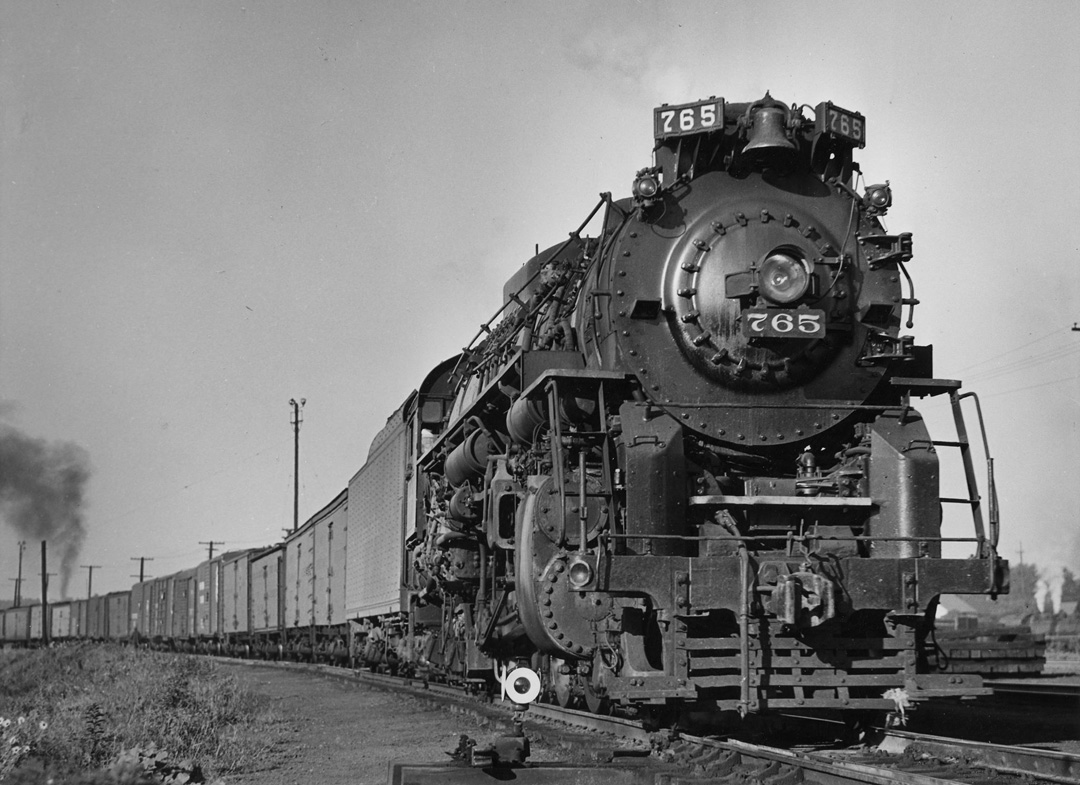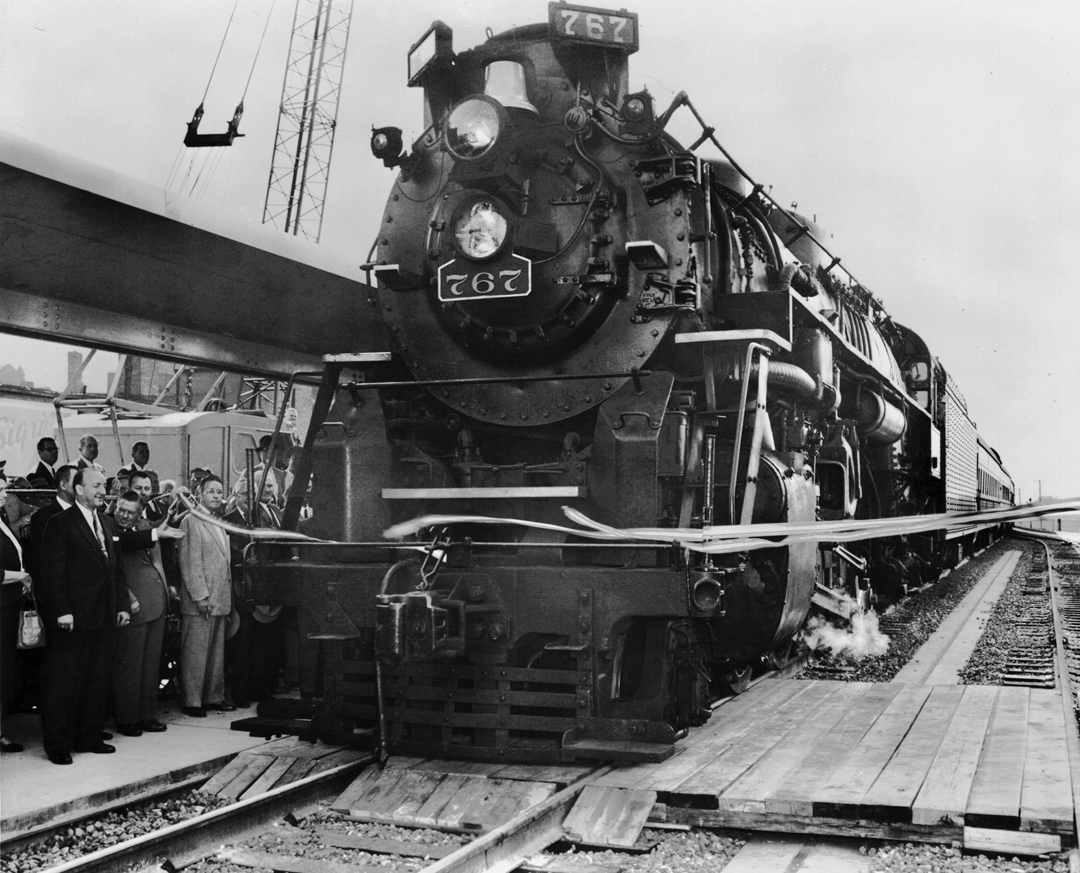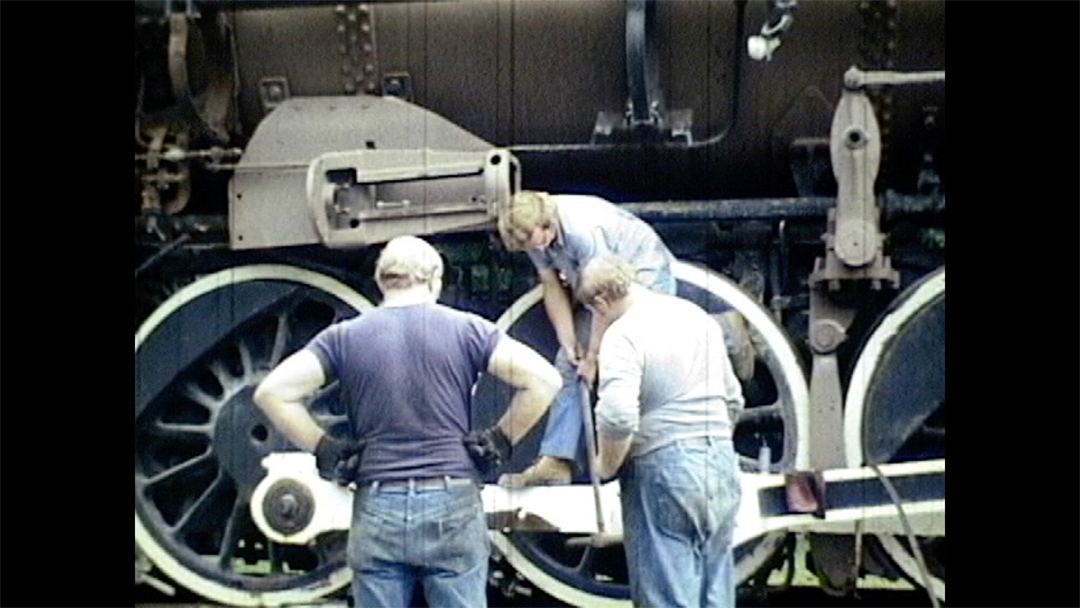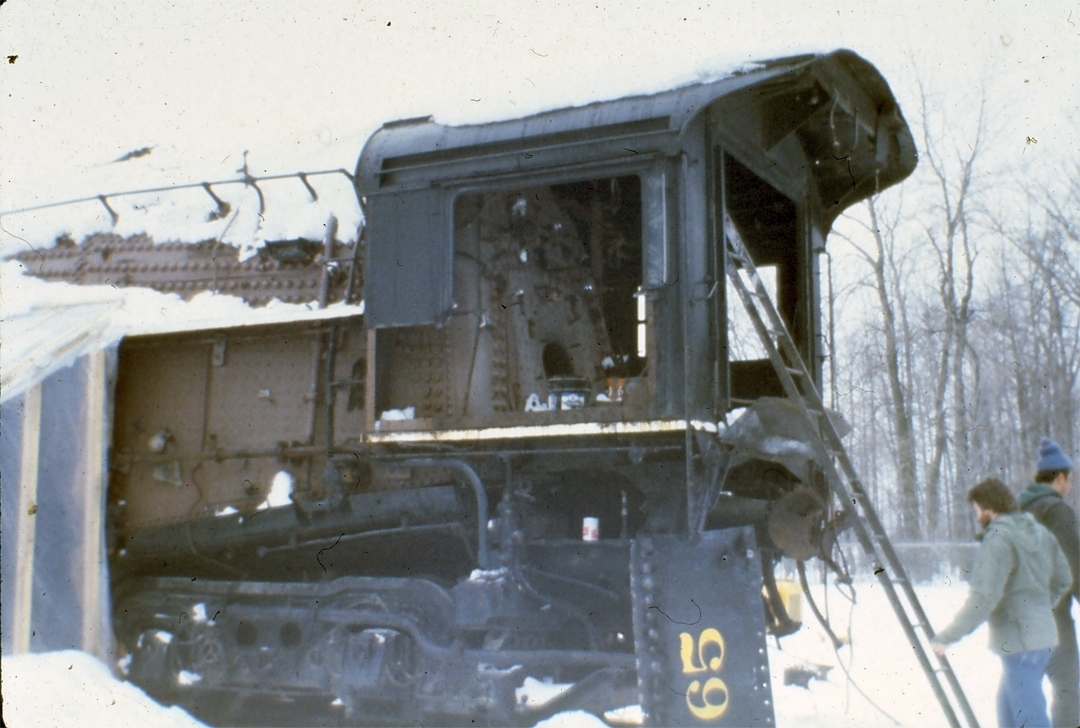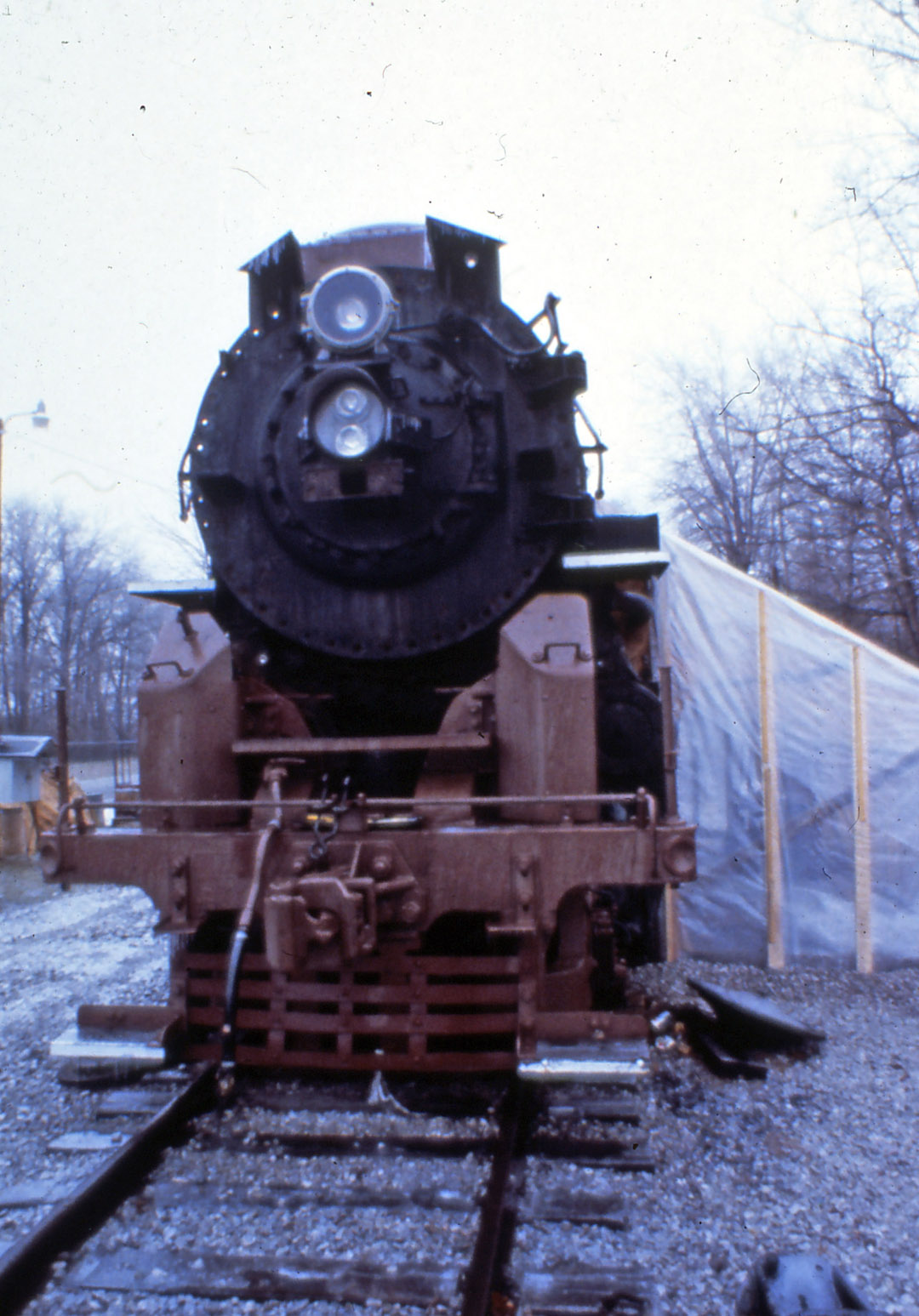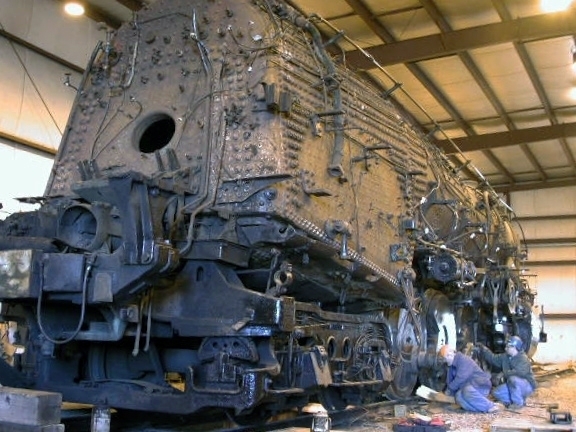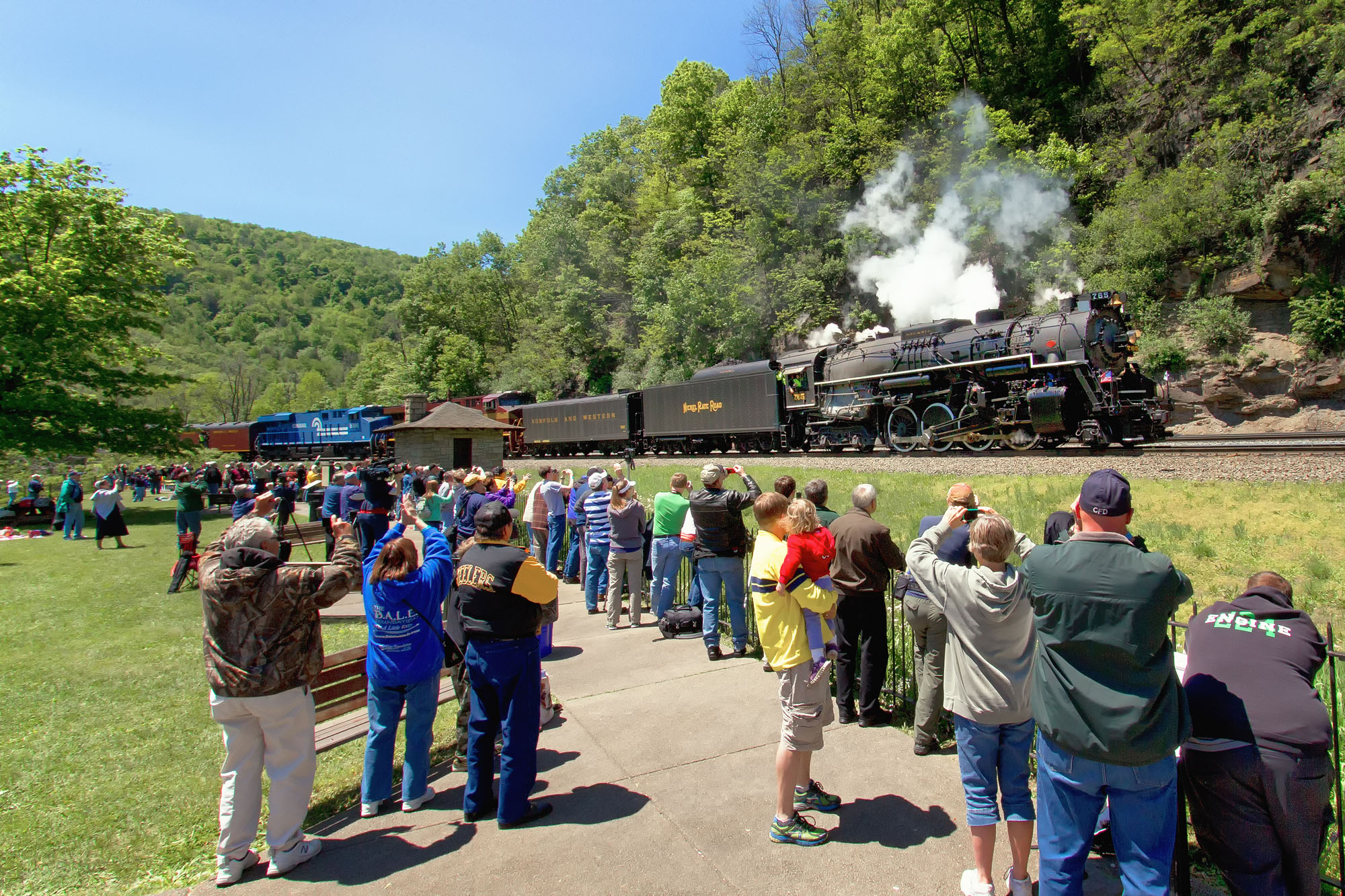The plaque, mounted on the tender of 767/765, explaining the locomotive’s preservation in 1963 as a “monument to a great period of development in our country — the era of steam railroading.”
In the 1940s and 50s, the City of Fort Wayne, Indiana and the Nickel Plate Road sustained an interesting love-hate relationship.
The iron roadbeds of the Nickel Plate, New York Central, Wabash, and Pennsylvania railroads surrounded Fort Wayne. The Nickel Plate was nestled within the city; its West Wayne Yards were only blocks from downtown. The railroads busy route on the northern end of the city kept Fort Wayne from expanding and persisted to displease motorists, who were constantly held up by the trains.
Fort Wayne had already dealt with the problems inherent with ground level roadbed, as the Pennsylvania and Wabash to the south had elevated their tracks decades prior. To the north, a heated battle between the railroad and city ensued for years, with citizens chanting, “Elevate the Nickel Plate!”
With ground broken in 1947, the elevation of the Nickel Plate Road began in 1953 and ended in 1955 with a formal celebration that saw Nickel Plate Berkshire no. 767 parade across the elevated tracks, breaking a ribbon among station platforms crowded with spectators.
A less informal event had been held some time before, when Nickel Plate Berkshire no. 765 became the first actual train to traverse the new rails. After earning the reputation as the “best of the west end” on the Fort Wayne Division, Berkshire no. 765 had been stored during its retirement in the enginehouse of the Nickel Plate Road in Fort Wayne.
At the end of the steam era, several of the eminent Nickel Plate Berkshires locomotives were stored at the Nickel Plate’s relatively new East Wayne yards, which had replaced the cramped quarters of the more urban West Wayne. Both no. 765 and no. 767 were among the sleeping sisters in the engine house and after sufficient slumber, the 765 was fired up in 1958 to supply heat to a stranded passenger train in Fort Wayne. As other steam locomotives were scrapped, the engine would be saved at the request of the city that had once demanded the trains off the streets.
The city had asked for no. 767, but no. 765 proved to be in much better cosmetic and mechanical condition and, unlike other engines on the Nickel Plate, had been stored indoors for several years.
During an inspection, no. 765 was deemed to be an ideal candidate for donation to the City of Fort Wayne. The roundhouse was asked to quietly change the locomotives’ numbers and the 765 – renumbered as 767 – was placed on display in Lawton Park within sight of the Nickel Plate elevation on May, 1963. The real 767 was scrapped in Chicago in 1964.
Fort Wayne’s engine became a downtown showpiece, but after years of exposure to the elements, a group of local enthusiasts formed the Fort Wayne Railroad Historical Society to secure the locomotive for restoration.

